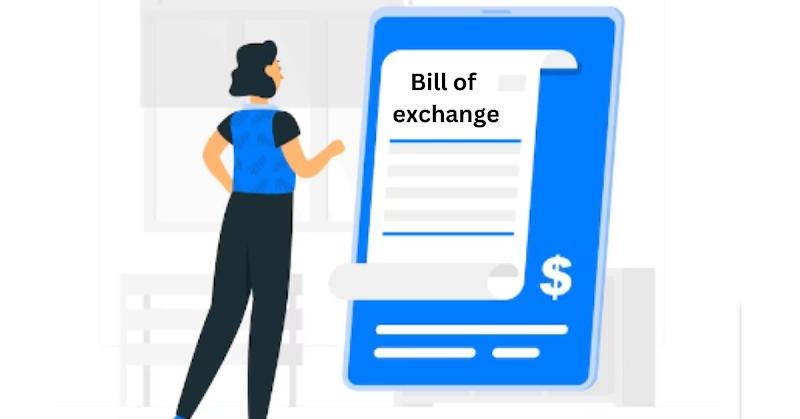When it comes to imports & exports, the complexities are higher than other forms of trade as the parties involved are in different countries. But no business comes easily. There are different types of risks involved in different types of businesses.
Selling goods on credit can largely help sellers to give their business a competitive edge over the others. This risk holds the exporters back from offering credit and expanding their business. A negotiable instrument like a Bill of Exchange is a useful tool to combat this risk for many exporters and importers.
What is a Bill of Exchange?
Bill of exchange is a negotiable instrument frequently used in international and domestic trade. It is an agreement that binds the buyer to pay the seller at a predetermined date. It is a useful tool that largely helps against the risk of non-payment.
In simpler terms, it is a note that instructs someone to pay the due amount to the creditor at a given date. A bill of exchange is very similar to letters of credit and promissory notes but they have some subtle but noticeable differences.
Which parties are involved in a Bill of Exchange?
There are a maximum of three parties that are involved in it and they are the drawer, the drawee & the payee.
- A drawee is the party required to pay the money.
- A drawer is the party that makes the bill of exchange
- A payee is a party that receives the money
There can be two or three parties in this negotiable instrument depending on the situation surrounding the agreement. In some cases, the drawer or the maker of the bill makes an endorsement. An endorsement is a transfer of the bill of exchange to a third party under special circumstances. If there is no endorsement, the drawer & the payee is the same.
Anatomy of a Bill of Exchange: What information does it have?
There is a certain format that needs to be followed and information that is mandatory to be included in a Bill of Exchange. The required components of this negotiable instrument are vital if one wants to understand this document:
- The title “Bill of Exchange”
- Name & address of the drawee
- Name & address of the drawer
- Date of Maturity
- Date of transaction
- Payable amount
- Signatures of both parties involved
- A unique identification number should be there on each bill
Types of Bill of Exchange
Various types of bills of exchange can be issued by one party to another and they are:
Demand Bill
This type of bill does not have a pending date mentioned on it and it depends heavily on the understanding between the involved parties. The amount payable is due when the bill is presented to the drawee/payee.
Inland Bill
This bill is issued not for international trade but for domestic trade. All parties involved in the transactions are from the same country.
Foreign Bill
This is the type of bill used in international business transactions. These are issues outside of Indian territory. The rules and regulations that back these bills are different as compared to the bills used in domestic trade. Two types of foreign bills are prominent and they are:
- Import Bill: This is when an exporter from overseas issues a bill of exchange for an Indian importer.
- Export Bill: This is when an exporter from India issues a bill for an overseas importer.
Supply Bill
A bill drawn by a contractor or a supplier for any government organization is commonly recognized as a supply bill.
Trade Bill
When a bill of exchange is used among a buyer and a seller for the settlement of a credit trade transaction it is commonly called a trade bill. It is to be accepted by the drawee for it to be valid. The major agenda for this bill to be drawn is to allow a buyer to make a credit purchase.
Accommodation Bill
An accommodation bill isn’t drawn against any goods or services, but rather against financial assistance offered by one party to another. It is simply an agreement to back up a transaction of monetary credit.
Documentary Bill of Exchange
In this type of bill, all the documents backing up the transactions are also presented by the parties involved in the transaction. This is done mainly to verify the transaction between two parties and the documentary bill of exchange usually involves:
Documents against payment bills: The documents offered for the full and final payment of the bill are given in exchange.
Documents against acceptance bills: The documents offered for the acceptance of the bills are given in exchange.
Clean Bill
A bill that does not have any other documentation to back it up is called a clean bill. These types of bills usually come with a higher interest rate than usual due to the lack of documentation.
Usance Bill
In this type of bill, there is a defined date of payment of the credited amount. Usance bills are heavily time-bound and allow the drawer to trade with more assurance and less risk.
Why is Amazon Global Selling your best bet when it comes to export trading?
If you are looking to start an export business Amazon Global Selling is the export program you are looking for. It helps you by streamlining your export business and gives you access to the market of 18 foreign marketplaces. The documentation and other logistics are much simplified compared to any other platform or program. To know more about Amazon Global selling click here.

